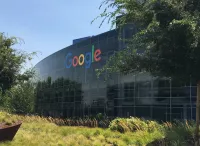Mozilla Firefox is a free and open-source web browser developed by the Mozilla Foundation. It utilizes the Gecko rendering engine, supporting current and upcoming web standards, and is available on Windows, macOS, Linux, Android and iOS. Due to iOS platform limitations, the iOS version uses WebKit instead of Gecko. An optimized version is also available for Amazon Fire TV.
1998: Mozilla community created by Netscape
In 1998, Netscape created the Mozilla community before being acquired by AOL.
September 23, 2002: Version 0.1 released
On September 23, 2002, version 0.1 of the standalone browser was released.
2002: Firefox created under the codename "Phoenix"
In 2002, members of the Mozilla community created Firefox under the codename "Phoenix" as a standalone browser.
April 3, 2003: Mozilla Organization to focus on Firefox and Thunderbird
On April 3, 2003, the Mozilla Organization announced its plan to shift its focus from the Mozilla Suite to Firefox and Thunderbird.
October 2003: Steven Garrity's Critique of Mozilla's Visual Identity
In October 2003, professional interface designer Steven Garrity published an article criticizing the visual design of early Firebird and Phoenix releases of Firefox.
2003: Phoenix renamed Firebird
In 2003, Phoenix was renamed to Firebird due to a trademark claim.
February 9, 2004: Mozilla Firebird becomes Mozilla Firefox
On February 9, 2004, Mozilla Firebird was renamed Mozilla Firefox, derived from a nickname of the red panda.
February 2004: Release of Firefox 0.8 with New Branding
In February 2004, Firefox 0.8 was released, introducing new branding efforts including new icon designs by silverorange and final renderings by Jon Hicks.
September 12, 2004: Launch of Spread Firefox (SFX) Marketing Portal
On September 12, 2004, Mozilla launched the "Spread Firefox" (SFX) marketing portal alongside the Firefox Preview Release, creating a centralized platform for marketing discussions.
November 9, 2004: Firefox released
On November 9, 2004, Firefox was officially released, challenging Internet Explorer's dominance with 60 million downloads within nine months.
November 2004: First Official Firefox Release Available in 24 Languages
In November 2004, the first official release of Firefox was available in 24 different languages and for 28 locales.
2004: Firefox Reaches 100 Million Downloads and Marketing Campaigns Launched
In 2004, Firefox achieved 100 million downloads in its first year and launched aggressive marketing campaigns starting with "marketing weeks" led by Blake Ross and Asa Dotzler.
November 2005: Version 1.5 released
In November 2005, version 1.5 of Firefox was released.
December 2005: Reports of High Memory Usage in Firefox 1.5
In December 2005, many Internet Week readers reported high memory usage in Firefox 1.5. Mozilla developers attributed this partially to the new FastBack feature.
July 15, 2006: Establishment of "World Firefox Day" Campaign
On July 15, 2006, the "World Firefox Day" campaign was established to celebrate the third anniversary of the Mozilla Foundation. The campaign ran until September 15, 2006.
September 15, 2006: End of "World Firefox Day" Campaign
The "World Firefox Day" campaign, established on July 15, 2006, concluded on September 15, 2006.
October 2006: Version 2.0 released
In October 2006, version 2.0 of Firefox was released.
2006: Debian's Trademark Dispute with Mozilla
In 2006, Debian faced a trademark dispute with Mozilla over the use of the Firefox logo, leading Debian to brand their modified version of Firefox as "Iceweasel."
2006: Mac OS X Builds for IA-32 Architecture Available
In 2006, Mac OS X builds for the IA-32 architecture became available via a universal binary with Firefox 1.5.0.2.
2006: Softpedia Notes Slow Startup Time for Firefox 1.5
In 2006, Softpedia reported that Firefox 1.5 had a longer startup time compared to other browsers, which was subsequently confirmed by speed tests.
2006: Exploit code availability for Internet Explorer vs Firefox
In 2006, The Washington Post reported that exploit code for known security vulnerabilities in Internet Explorer was available for 284 days compared to only nine days for Firefox before the problem was fixed.
2006: Firefox Contributors Create Crop Circle of Logo
In 2006, contributors from Oregon State University created a crop circle of the Firefox logo in an oat field near Amity, Oregon, to promote the browser.
2006: Firefox 2 Memory Usage Compared to Internet Explorer 7
In 2006, tests by PC World and Zimbra indicated that Firefox 2 used less memory than Internet Explorer 7.
2007: Mozilla Launched Live Chat Service
In 2007, Mozilla introduced the Live Chat service, enabling users to receive technical support from volunteers, although the service was later discontinued.
2007: Mozilla Foundation's Trademark Policy Controversy
In 2007, there was controversy surrounding the Mozilla Foundation's policy on the use of the "Firefox" trademark by open-source distributions, with concerns raised about modifications to the source code and consistent user experience.
February 21, 2008: Firefox Community Celebrates 500 Million Downloads
On February 21, 2008, the Firefox community celebrated reaching 500 million downloads by visiting Freerice to earn 500 million grains of rice.
June 2008: Version 3.0 released
In June 2008, version 3.0 of Firefox was released.
2008: Browsers shift to multiprocess architecture
Between 2008 and 2012, most browsers shifted to a multiprocess architecture to isolate high-risk processes.
June 2009: Version 3.5 released
In June 2009, version 3.5 of Firefox was released.
July 2009: One billion Firefox downloads
As of July 2009, Firefox had been downloaded over one billion times since the release of Firefox 1.0. This number excludes downloads from software updates or third-party websites and does not represent a unique user count.
November 2009: Firefox usage share peaks
In November 2009, Firefox's usage share grew to a peak of 32.21%, with Firefox 3.5 overtaking Internet Explorer 7.
January 2010: Firefox for Mobile (Fennec) Released for Maemo
In January 2010, Firefox for mobile, code-named "Fennec", was first released for Maemo with version 1.0.
January 2010: Version 3.6 released
In January 2010, version 3.6 of Firefox was released.
July 2010: IBM asks employees to use Firefox
In July 2010, IBM requested all its employees (around 400,000) to use Firefox as their default web browser.
2010: Landry Breuil Maintained Firefox Port for OpenBSD
Since 2010, the Firefox port for OpenBSD has been maintained by Landry Breuil.
February 2011: Mozilla Announces Retirement of Spread Firefox (SFX)
In February 2011, Mozilla announced plans to retire Spread Firefox (SFX), its marketing portal.
March 2011: Firefox for Mobile (Fennec) Released for Android
In March 2011, Firefox for mobile, code-named "Fennec", was released for Android with version 4.0.
March 2011: Mozilla Plans Switch to Rapid Release Model
In March 2011, Mozilla presented plans to switch to the rapid release model with a faster 16-week development cycle.
March 2011: Version 4.0 released
In March 2011, version 4.0 of Firefox was released.
April 2011: Rapid Release Model Implemented
In April 2011, Mozilla implemented the rapid release model, splitting the release process into four channels.
May 2011: Mozilla Officially Closes Spread Firefox (SFX)
In May 2011, Mozilla officially shut down Spread Firefox (SFX), with plans for a future iteration of the website.
September 2011: Support for Maemo Discontinued
In September 2011, support for Maemo was discontinued after version 7 of Firefox for mobile.
September 2011: SVG font tests removed from Acid3 test
In September 2011, the SVG font tests were removed from the Acid3 test, leading Firefox 4 and later versions to score 100/100.
November 2011: Chrome surpasses Firefox in browser usage
In November 2011, Google Chrome surpassed Firefox as the second-most used web browser.
January 3, 2012: Mozilla Released GPL-compatible MPL 2.0
On January 3, 2012, Mozilla released the GPL-compatible MPL 2.0.
June 5, 2012: Firefox 13 Released with MPL 2.0
With the release of Firefox 13 on June 5, 2012, Mozilla adopted MPL 2.0, replacing the previous tri-licensing scheme.
September 2012: Mozilla Pulls Firefox Home from the App Store
In September 2012, Mozilla pulled Firefox Home from the App Store and focused on other projects, later releasing the source code for its synchronization software.
October 2012: Firefox user count in October 2012
According to Mozilla, as of October 2012, Firefox had more than 450 million users.
2012: Browsers shift to multiprocess architecture
Between 2008 and 2012, most browsers shifted to a multiprocess architecture to isolate high-risk processes.
2012: Stable release reaches version 17
By the end of 2012, Firefox's stable release reached version 17 due to a rapid development and release model.
2012: Mozilla launches Servo project
In 2012, Mozilla launched a new project called Servo to write a completely new and experimental browser engine.
February 2013: Plans announced to disable third-party cookies by default
In February 2013, plans were announced for Firefox 22 to disable third-party cookies by default, but the introduction was delayed.
April 2013: Mozilla CEO States Firefox Would Not Come to iOS if Apple Required WebKit
In April 2013, then-Mozilla CEO Gary Kovacs stated that Firefox would not come to iOS if Apple required the use of the WebKit layout engine.
June 2013: Tom's Hardware Declares Firefox the Winner of Performance Benchmarks
In June 2013, Tom's Hardware again conducted performance tests, this time on Firefox 22, Chrome 27, Opera 12, and Internet Explorer 10 and declared Firefox the "sound" winner, based on the performance and non-performance indices.
August 2013: Version 23 blocks mixed content and disables JavaScript preferences
In August 2013, version 23 blocked mixed content and JavaScript could no longer be disabled through Firefox's preferences.
September 2013: Mozilla Releases Metro-Style Version of Firefox
In September 2013, Mozilla released a Metro-style version of Firefox optimized for touchscreen use, on the "Aurora" release channel.
2013: Guest session mode added to Firefox for Android
In 2013, Firefox for Android added a guest session mode that wiped browsing data at the end of each session.
March 14, 2014: Mozilla Cancels Metro-Style Firefox Project
On March 14, 2014, Mozilla cancelled its Metro-style version of Firefox due to a lack of user adoption.
October 2014: Firefox Hello implementation of WebRTC added
In October 2014, Firefox Hello, an implementation of WebRTC, was added, enabling video calls and screen/file sharing.
2015: Firefox starts Electrolysis (e10s) project
In 2015, Firefox started its Electrolysis (e10s) project to implement sandboxing across multiple components.
2015: Firefox Announced to Be Moving Forward with Firefox for iOS
In 2015, Mozilla announced it was moving forward with Firefox for iOS, and was fully released in November later that year.
2015: Benchmark testing in early 2015
In early 2015, benchmark testing on a Windows machine compared Microsoft Edge [Legacy], Internet Explorer, Firefox, Chrome, and Opera. Firefox had the highest score on three of seven tests. JavaScript performance tests were conflicting. Firefox surpassed browsers on the Peacekeeper benchmark but lagged in SunSpider. In Mozilla's Kraken, it came second to Chrome, while in Google's Octane challenge, it took third behind Chrome and Opera. Firefox led in WebXPRT. In HTML5 compatibility, Firefox ranked in the middle.
August 2016: Firefox releases Electrolysis (e10s) project to beta
In August 2016, Firefox released the Electrolysis (e10s) project to beta, noting a 10–20% increase in memory usage.
September 2016: Firefox Hello scheduled for removal
Firefox Hello was scheduled to be removed in September 2016.
November 2016: Firefox Focus Released for iOS
In November 2016, Firefox released a new iOS app titled Firefox Focus, a private web browser.
2016: Firefox 49 Drops Support for Mac OS X 10.6-10.8
In 2016, Firefox 49 dropped support for Mac OS X 10.6–10.8.
2016: Mozilla announces Quantum project
In 2016, Mozilla announced the Quantum project to improve Firefox's Gecko engine and transition to a multi-process model.
2016: Benchmark tests in 2016
In 2016, benchmark tests showed Firefox's JavaScript performance on Kraken and Jetstream trailing behind other browsers except Internet Explorer (IE). On Octane, Firefox was ahead of IE and Safari but slightly behind others, including Vivaldi and Microsoft Edge [Legacy]. Edge [Legacy] took first place on Jetstream and Octane benchmarks.
2016: Debian Returns to Firefox Branding
In 2016, the Debian project switched back to using the Firefox branding for its modified version of the browser, resolving the previous trademark dispute with Mozilla.
March 2017: Firefox 52 ESR Released, Last Version for Windows XP and Vista
In March 2017, Firefox 52 ESR, the last version of Firefox for Windows XP and Windows Vista, was released.
November 2017: Firefox 57 released as Firefox Quantum
In November 2017, Firefox 57, containing enhancements from Quantum, was released as Firefox Quantum, marking the "biggest update" since version 1.0.
November 2017: Firefox incorporates "Quantum" technology
In November 2017, Firefox began incorporating new technology under the code name "Quantum" to promote parallelism and a more intuitive user interface.
November 2017: Mozilla Partners with Reggie Watts for Firefox Quantum Promotion
In November 2017, Mozilla collaborated with Reggie Watts to create a series of TV ads and social media content to promote the launch of Firefox Quantum.
November 2017: Electrolysis (e10s) enabled by default
In November 2017, the Electrolysis (e10s) rewrite was enabled by default for all Firefox users.
November 2017: Firefox 57 and Mozilla's Quantum project
In November 2017, with the adoption of Firefox 57 and Mozilla's Quantum project, tests showed Firefox was faster than Chrome in JavaScript tests and used less memory with multiple tabs open.
2017: Landry Begins Hosting Newer Firefox Versions for OpenBSD
In 2017, Landry Breuil began hosting packages of newer Firefox versions for OpenBSD releases from 6.0 onwards.
2017: Mozilla Abandoned Aurora Channel
In 2017, Mozilla discontinued the Aurora channel due to low user engagement and rebased Firefox Developer Edition onto the beta channel.
2017: Mr. Robot extension silently added
In 2017, an extension designed to promote the show Mr. Robot was silently added in an update to Firefox without user permission.
2017: Desktop clients in 2017
In 2017, the active monthly count of Firefox desktop clients was around 310 million, according to Mozilla's Firefox Public Data report.
March 2018: Oracle Solaris Desktop Beijing Team Disbanded, Ending Firefox Port Maintenance
In March 2018, the Oracle Solaris Desktop Beijing Team was disbanded, ending their maintenance of the Solaris 10 port of Firefox.
June 2018: Support Ended for Firefox 52 ESR
In June 2018, support for Firefox 52 ESR ended.
September 2018: Firefox Reality Released for AR/VR Headsets
In September 2018, Firefox Reality was released for Augmented Reality and Virtual Reality headsets, supporting web browsing through 2D windows and immersive VR pages through Web VR.
2018: Mozilla integrates Servo parts into Gecko engine
In 2018, Mozilla opted to integrate parts of the Servo project into the Gecko engine in a project codenamed the Quantum project.
May 2, 2019: Mozilla Announces Strengthening of Signature Enforcement
On May 2, 2019, Mozilla announced that it would be strengthening the signature enforcement for Firefox extensions, including retroactively disabling older extensions deemed insecure.
May 3, 2019: Firefox add-ons disabled due to certificate expiry
On May 3, 2019, the expiry of an intermediate signing certificate on Mozilla servers caused Firefox to automatically disable and lock all browser extensions (add-ons).
May 2019: Fastest web browser
In May 2019, TechRadar rated Firefox as the fastest web browser.
May 21, 2019: Firefox Updated to Block Cryptocurrency Mining Scripts
On May 21, 2019, Firefox version 67.0 was updated with the ability to block scripts that use a computer's CPU to mine cryptocurrency without permission, and to block known fingerprinting scripts.
June 2019: Mozilla Unveils Revised Firefox Logo
In June 2019, Mozilla revealed a redesigned Firefox logo as part of a broader effort to establish a brand system encompassing Firefox and its associated applications and services.
2019: Mozilla Released Project Fluent
In 2019, Mozilla released Project Fluent, a localization system that allows translators to be more flexible with their translations.
2019: Guest session mode removed from Firefox for Android
In 2019, the guest session mode was removed from Firefox for Android to "streamline the experience".
August 2020: Mozilla Launches New Firefox for Android App (Firefox Daylight/Fenix)
In August 2020, Mozilla launched a new version of its Firefox for Android app, named Firefox Daylight (codenamed Fenix), which featured the GeckoView engine and Enhanced Tracking Protection 2.0.
Oct 2020: Firefox market share decline
From October 2020, the desktop market share of Firefox started to decline in countries where it used to be the most popular.
2020: Firefox Moves to a Four-Week Release Cycle
In 2020, Firefox transitioned to a four-week release cycle to align with Chrome's support for new web features.
2020: Mozilla lays off Servo team
In 2020, Mozilla laid off all developers on the Servo team and transferred ownership of the project to the Linux Foundation.
January 6, 2021: Support for Adobe Flash dropped
On January 6, 2021, support for Adobe Flash was dropped with the release of Firefox 85.
March 2021: Firefox Launches SmartBlock for Cross-Site Tracking Protection
In March 2021, Firefox version 87 launched SmartBlock to protect against cross-site tracking without breaking websites, isolating data from each site visited to prevent cross-site scripting.
June 1, 2021: Firefox's 'Proton' redesign offered in stable release
On June 1, 2021, Firefox's 'Proton' redesign was offered through its stable release channel after being available in beta builds.
November 2021: End of Support for OS X 10.9-10.11
In November 2021, Mozilla ended support for OS X 10.9–10.11, with those users being supported on the Firefox 78 ESR branch.
November 2021: Firefox Available on Microsoft Store
In November 2021, Mozilla made Firefox available on Microsoft Store. The Store-distributed package does not interfere with the traditional installation.
2021: Firefox market share drop in 2021
In 2021, the desktop market share of Firefox significantly dropped in Eritrea and Cuba. In Eritrea, it fell from 50% in October 2020 to 9.32% in September 2021. In Cuba, it dropped from 54.36% in September 2020 to 38.42% in September 2021.
January 13, 2022: Firefox HTTP/3 implementation issue causes outage
On January 13, 2022, an issue with Firefox's HTTP/3 implementation resulted in a widespread outage for several hours.
February 2022: Igalia Took over Stewardship of Firefox Reality
In February 2022 Mozilla announced that Igalia took over stewardship of Firefox Reality project under the new name of Wolvic.
July 2023: Firefox 115 ESR Released as Last Version for Windows 7 and 8
In July 2023, Firefox 115 ESR was released as the last version for Windows 7 and 8.
September 26, 2023: Firefox 118.0 introduces on-device translation
On September 26, 2023, Firefox 118.0 introduced on-device translation of web page content.
December 29, 2023: Concerns of dropping Firefox support
As of December 29, 2023, there were concerns that support for Firefox would be dropped by the UK and US governments, as its browser market share among US government website visitors was 2.2%. The governments typically support browsers with over 2% market share.
2023: Desktop clients in 2023
By 2023, the active monthly count of Firefox desktop clients had decreased to around 200 million, according to Mozilla's Firefox Public Data report.
January 23, 2024: Mozilla introduces APT repository for Debian-based Linux
On January 23, 2024, Mozilla introduced an official APT repository for Debian-based Linux distributions with the release of Firefox 122.0.
July 2024: Mozilla Considers Extending Support for Firefox 115 ESR
In July 2024, a Mozilla employee announced that the company was considering extending support for Firefox 115 ESR, the last version for Windows 7 and 8, beyond its initial end-of-life date.
September 2024: Extension announced for the 115 ESR branch
In September 2024 an extension was announced for the Firefox 115 ESR branch for an initial period of six months.
September 2024: Mozilla Announces Extension for Firefox 115 ESR Support
In September 2024, Mozilla announced an initial six-month extension for the support of Firefox 115 ESR, the last version for Windows 7 and 8, and will re-evaluate the situation in early 2025.
October 2024: Firefox browser usage in October 2024
In October 2024, Firefox was the fourth-most widely used desktop browser, holding 2.95% of the worldwide usage share of web browsers across all platforms.
October 2024: Initial End-of-Life Planned for Firefox 115 ESR
The initial end-of-life for Firefox 115 ESR, the last version for Windows 7 and 8, was planned to be in October 2024.
October 2024: Accessibility concerns with Proton redesign remain unresolved
As of October 2024, accessibility concerns regarding Firefox's 'Proton' redesign had not been resolved, despite Mozilla's claims to work with the accessibility community.
February 2025: Firefox usage share
As of February 2025, Firefox had a 6.36% usage share on traditional PCs, making it the fourth-most popular PC web browser.
February 18, 2025: Firefox 115 ESR support extended again
On February 18, 2025, the Firefox 115 ESR support for Windows 7 and 8 was extended again for an additional six months, aligning its end-of-life date with the 128 ESR branch in September 2025.
March 2025: Firefox Available in 97 Locales
As of March 2025, the supported versions of Firefox are available in 97 locales (88 languages).
September 2025: End-of-Life date of Firefox 115 ESR
September 2025 is the end-of-life date of the Firefox 115 ESR branch.
September 2025: End-of-life date leads to September 2025
September 2025 is the end-of-life date of the Firefox 115 ESR branch.
2025: Mozilla Introduces Terms of Use for Firefox, Faces Criticism
In 2025, Mozilla introduced a terms of use for Firefox, sparking criticism over a clause granting a license to use user-inputted information, raising privacy concerns. Mozilla later revised its privacy FAQ, clarifying data usage and the definition of "sell".
Mentioned in this timeline

Google LLC is a multinational technology company specializing in online...

Microsoft an American multinational technology corporation headquartered in Redmond Washington...
Cryptocurrency is a digital currency operating on a decentralized network...

An apple is a widely cultivated edible fruit originating in...

Intel Corporation headquartered in Santa Clara California is a multinational...

The Kraken is a legendary sea monster possibly a giant...
Trending

9 months ago Jamie Foxx at 'Number One on the Call Sheet' premiere, addresses DEI rhetoric.

5 months ago Téa Leoni and Tim Daly Get Married After Years Together: Intimate Wedding

7 days ago Dick Vitale and Charles Barkley Team Up for College Basketball Broadcasts This Season
4 days ago Mortgage Rates Fall: Refinance Opportunities and Lender Options Emerge in December 2025
14 days ago Matt Rogers' brief moment: Comedian strips down, ignites wild reactions, fans are feral.

Fraser Minten is a Canadian professional ice hockey centre currently playing for the Boston Bruins in the NHL He was...
Popular
Matt and Ross Duffer known as the Duffer Brothers are...

Candace Owens is an American conservative political commentator and author...

Ilhan Omar is an American politician currently serving as the...

XXXTentacion born Jahseh Dwayne Ricardo Onfroy was a controversial yet...

Tom Cotton is an American politician and Army veteran currently...

Harriet Tubman was a pivotal American abolitionist and social activist...